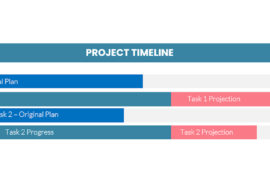I’m happy to include a guest post today from University Alliance and the Project Management Certification prep program at Villanova University. I hope you enjoy it. – Chris
As most project managers know, assembling the best talent for a project can give the project a quick, successful start. Knowing how to build the best team can be a challenge though, as it requires evaluating talent and comparing it with the needs of the project before the first team meeting has even happened. Moreover, the project manager has to be ready and willing to make adjustments as the process moves forward.
Define the Needs
The first step in building a project “dream team” is to define exactly what the needs of the project are. Thinking through the key attributes that are required for success is a helpful exercise. Do team members need to have amazing communication skills, a specific technology background or a can-do attitude? Knowing this in advance will assist in finding the best fit for the team.
The same question turned upside down is also critical. What attributes will detract from the success of the project? Too much ego, a negative attitude or poor communication skills might get in the way of the rest of the team. However, know there is room for those who don’t quite match up to the list of key attributes, but do have other intangibles. If everyone else on the team is a great communicator, a more reserved team member might be positively influenced. The goal is to match up complementary skills and to allow for growth.
Working Together
The next step to effective team building is to determine if the group in consideration will work well together given their individual personalities and attitudes. This is the time to consider the old adage, “too many cooks spoil the soup.” If the entire team is made up of strong leaders, some may experience conflict. Additionally, check to see how individuals are at receiving feedback. Honest feedback, given carefully, can help move a project along at a strong pace.
Another area to investigate is how reliable each team member is according to their previous team leader. Most projects will face bumps in the road, so it is imperative to know that the team can reassess and adjust when problems arise. Think through whether the people on the team will put forth the extra effort to get the project done on time. That level of teamwork can make or break a project.
Adjusting Over Time
Once the evaluative process is complete and the team is running, check to see if there are any gaps in capacity. If there are, then the manager should quickly bring in new team members to fill them to prevent slowdowns in work or morale issues. During that time, tracking the performance of the team is the next challenge. While scope and personnel may change over time, the project still must have a beginning, middle and an end. There should be clear goals and deliverables that team members can understand as well as undertake. Rotating team members as needed and removing those who are under-performing will help keep the team streamlined. Adding new talent for particular phases can also help to increase the efficiency of the project.
Realistically, creating a successful team is much more than simply putting people into a room and asking them to complete a task. By carefully considering the talents of team members, their attitudes and aptitudes, it is possible to create a team that can handle any project.
Erin Palmer is a writer and editor for Bisk Education. She works with Villanova University’s project management certification courses, which prepare you for PMI certification.




